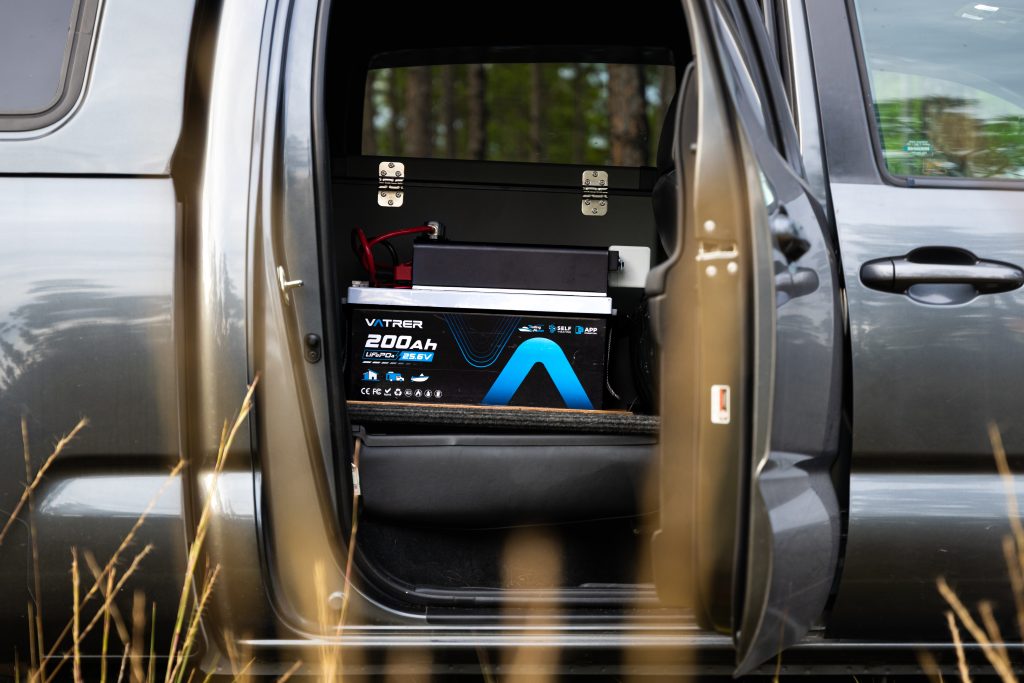
When considering an overland build, you immediately start juggling which creature comforts you can’t live without. For us, that creature comfort was an ICECO fridge. But for week-long stints away from accessible power, how do you power it? Warm food and drinks aren’t an option.
At first, I borrowed a friend’s power station. It worked, but just barely. On hot days, it provided me with approximately eight hours of runtime before needing a recharge. That meant babysitting power, constantly plugging in or searching for a public outlet, adjusting the small solar panel, and worrying if the slightly warmer day meant we’d soon run out of power. It worked in a pinch, but apart from the fact that I didn’t own it, it really wasn’t a long-term solution. Before you say “ get a larger capacity power station”, hear me out.
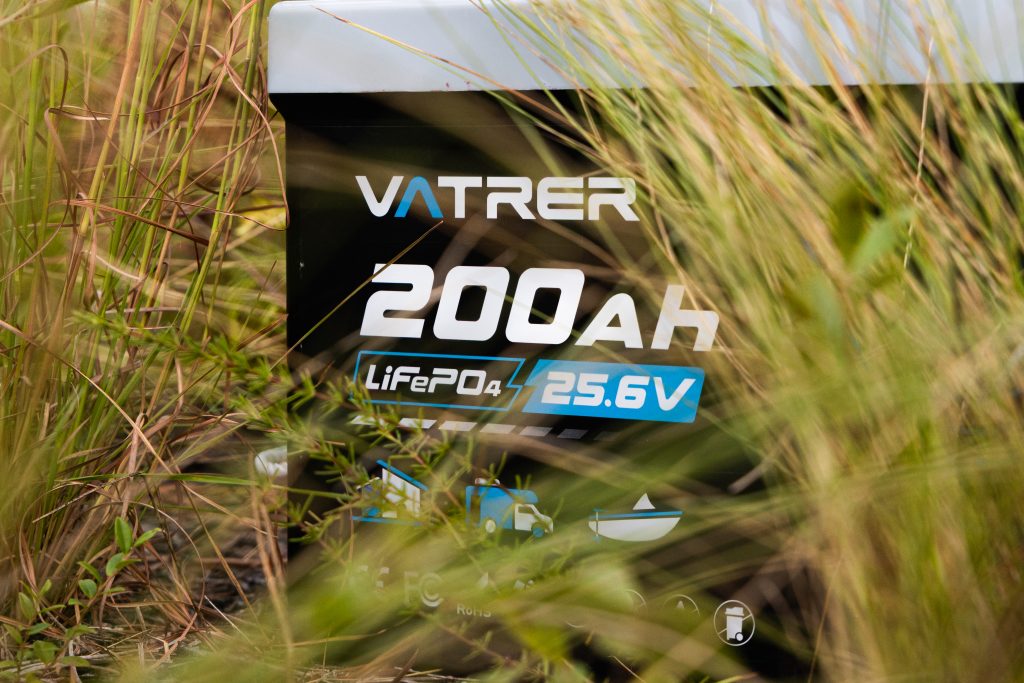
Having power is great, and as I began researching my options, I learned that there are functionally two categories of solutions: a self-contained, custom battery system or an off-the-shelf power station. I decided to go with the former, a 24V 200Ah Lithium Battery from Vatrer.
Before we begin, I want to start by saying that there is nothing inherently wrong with a power station. Pretty much everyone already owns some sort of power station. Heck, many have actually moved away from dual battery setups in favor of power stations because they are reliable, convenient, and require little to no setup. I was actually pretty close to just buying one, but then I realized that for the price, I could probably get significantly more power and a system I could grow into with a battery setup. For those of you who are building your rigs with longer trips in mind or think you might grow into something bigger one day, then this might be the option for you.
Table Of Contents
My Setup
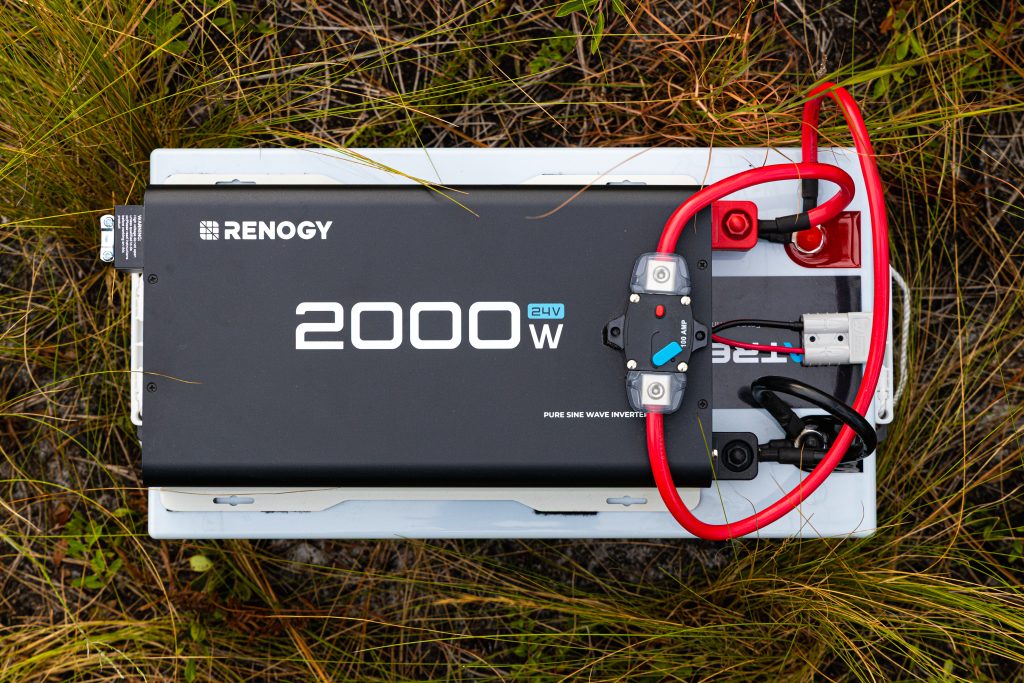
First of all, yes, this is a lithium battery. Not a standard automotive one.
To quickly summarize… Lithium batteries are ideal for overland and camping because they’re lightweight, long-lasting, and offer high energy density and fast charging, making them perfect for reliably powering gear off-grid. We could really get into the subject, but we’ll save that for another time.
Currently, the Vatrer battery is paired with a Renogy pure sine wave 2000W inverter, mounted directly on top, and a 100A breaker protects the system. Since this battery features a more modern threaded post connection, I installed a 50-amp Anderson Connector to facilitate a quick charging hookup for my Victron Smart Charger (12/24V).
Vatrer offers a wide range of battery options, from 12V automotive options to a whopping 72V golf cart battery. After extensive research, I chose Vatrer’s 24V 200Ah LiFePO4 for a couple of reasons. I wanted to be able to charge it from my truck’s 12V system (via a DC-DC converter) and/or solar input (MPPT) in the future, but I didn’t want to limit future build capacity. I am also frequently needing to recharge camera and drone batteries, laptops, or run various photo/film lights.
Do I think the battery I chose was overkill for my immediate needs? Probably. However, I’d rather have too much power than not enough, because in the end, stressing about running out of battery power when your fridge is full of groceries, your laptop is dying, or your fans are dead, is just super annoying.
Integrated Battery Management
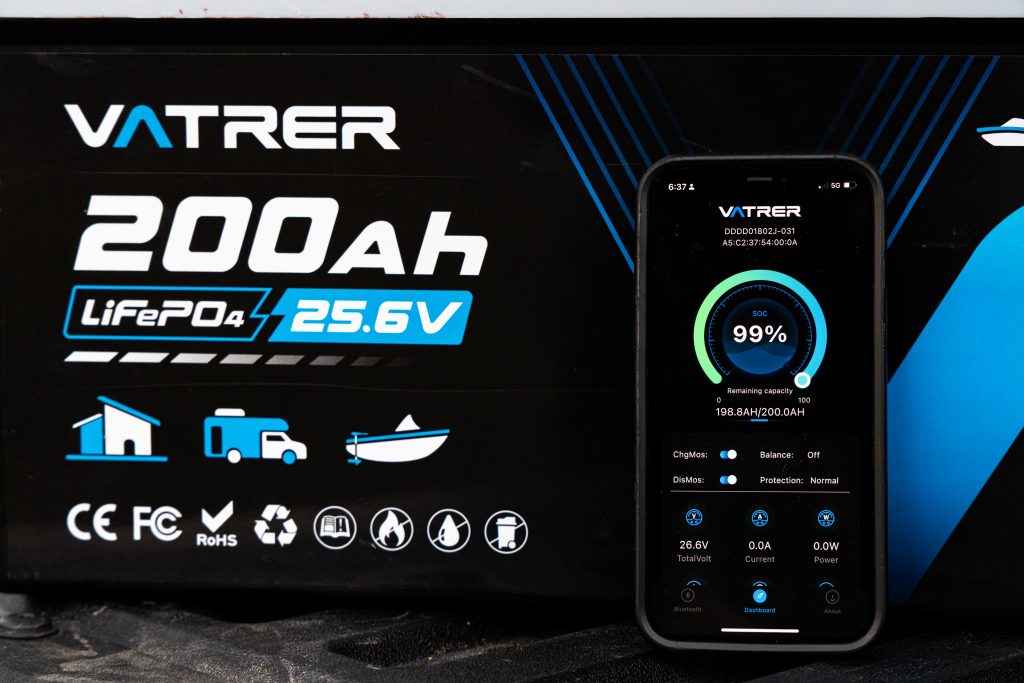
When you choose a system like this over a power station, the first question I would find myself asking is, ‘How am I supposed to know how much power is left?’ As it turns out, LiFePO4 battery brands like Vatrer have their batteries manufactured with software integrated into them, commonly referred to as the Battery Management System (BMS). As a result, I can open an app on my phone and quickly check the charge status, voltage, current draw, and even battery temperature. I use it way more than I thought, and often find myself mindlessly pulling it up to double-check that everything is good to go.
The design of both the battery and my setup is intentionally straightforward: portable enough to move between the truck and the garage, yet capable enough to anchor a more permanent off-grid setup down the road.
Real-World Performance
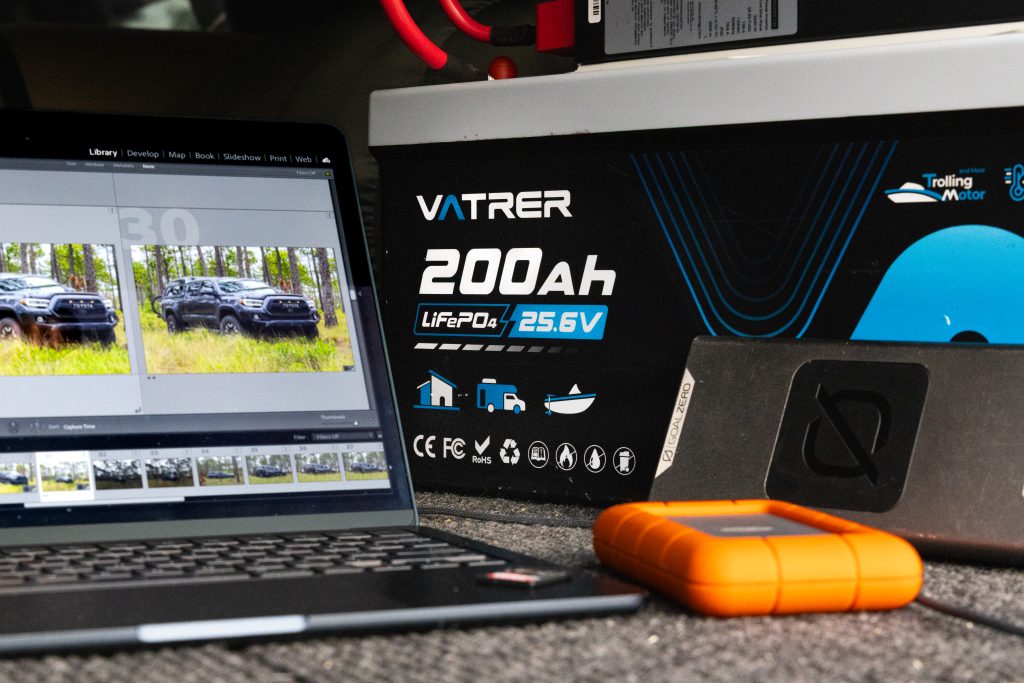
The difference between my previous experience and this Vatrer system is night and day. Instead of scrambling for power after half a day, I can now run my ICECO VL45, camera, and laptop for literally weeks without a recharge.
That kind of capacity changes everything. I don’t ration power anymore. I can plug in a laptop, charge camera batteries, run fans at night, and still never feel like I’m scraping the bottom. Like many others, I would recommend doing the math on what your setup’s needs are in terms of power, but for my situation, I basically have power for days.
Beyond The Tacoma
The biggest surprise has been how useful this system is outside of the truck. I think we all want to believe we are living in our trucks 100% of the time, but we aren’t all doing that. We do, however, use them for the projects around us, and I surely want my investment in my truck’s mods to pay for themselves.
As an example, I have been building a detached building in my backyard. It was immediately clear that I didn’t have enough long extension cords or outlets to power all the tools I was running from the house. The truck was already around back for tool staging, so why not use the battery as a jobsite power source? It ran my miter saw without hesitation, charged tool batteries, and even kept my compressor running for a week, with roughly 60 percent of its charge remaining.
I also live in coastal North Carolina, an area prone to severe storms and hurricanes that cause power outages. With the inverter attached, the system is no longer just an “overlanding battery,” but a convenient piece of gear that helps keep my family’s cellphones and safety equipment charged and ready to go for as long as we need. And in the land of generators, it’s also silent.
Drawbacks
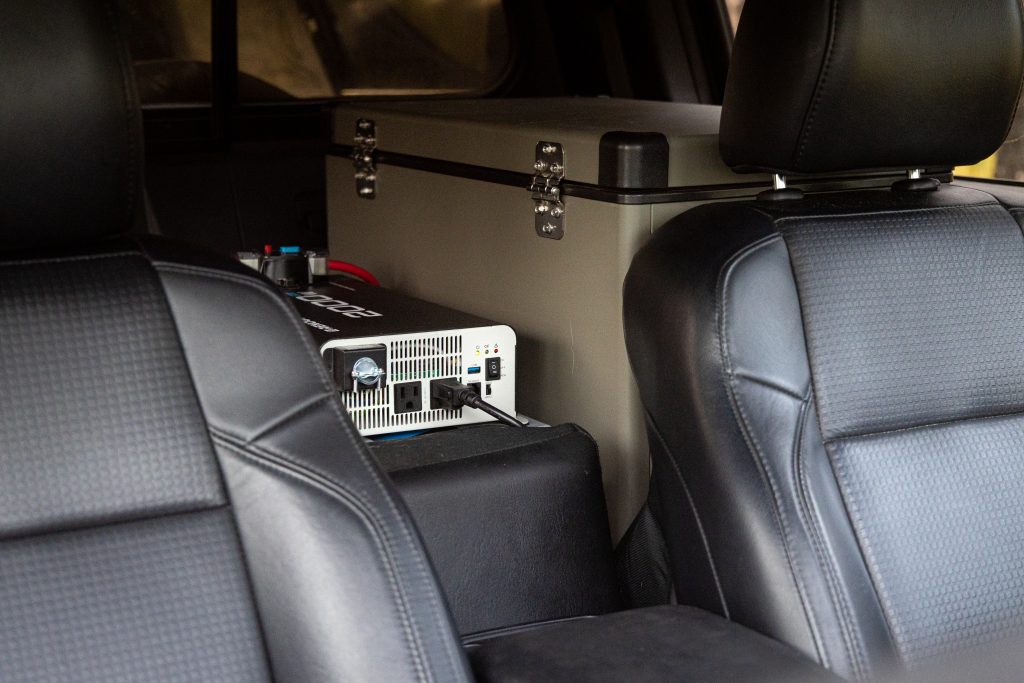
Of course, there are trade-offs.
- Size and weight: It’s big. The measurements for this battery are 20.47″ x 10.59″ x 8.66″. Also, it is not impossible to move, but you certainly will flinch thinking about the task (Vatrer has included stowable rope handles that I frequently use). I didn’t weigh it compared to a standard lead-acid 12V battery, but honestly, you can expect a similar level of effort to move one versus the other.
- DIY vs. turnkey: Compared to an off-the-shelf power station, there’s more setup involved, and some additional cost is incurred if you also opt for an inverter. You don’t just press a button and go when you receive the battery. I had initially set it up with a simple wired $15 DC outlet for powering just the fridge, before receiving the inverter and breaker, which worked great.
The power-to-dollar ratio is hard to ignore. The Vatrer offers more usable watt-hours (a claimed 5125Wh) for the money (~$1000 USD, $ 1,600 with inverter and charger) compared to most similar off-the-shelf power stations ($2k+), and it gives you the flexibility to build the system around your own needs as they change.
Final Thoughts
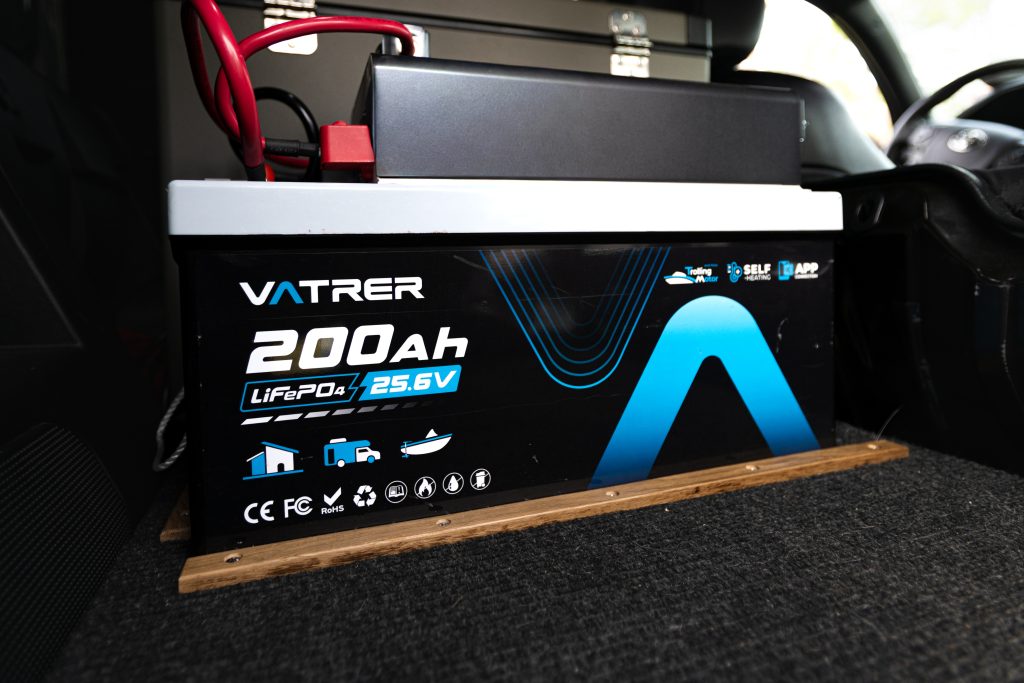
Who Is This Battery for?
- Long-haul travelers & overlanders who want days (or weeks) of fridge runtime without thinking about charging.
- DIY tinkerers who prefer building their own system around specific needs rather than being locked into an all-in-one power station.
- People who need crossover use, i.e., power in the truck, also for home projects, job sites, or as a backup.
- Value-focused buyers are looking for the most watt-hours per dollar compared to packaged options.
I didn’t necessarily set out to get the biggest battery I could find. I just wanted a reliable way to keep my life powered while off-grid, and along the way, I decided to future-proof my needs. What I ended up with was a system that not only powers my Tacoma setup but also doubles as a serious power supply for other applications.
The Vatrer 24V 200Ah LiFePO4 isn’t for everyone — it’s heavy, it takes space, and it requires some DIY effort to integrate. But if you’re tired of rationing power or nursing a small power station through hot summer days, it’s a leap worth considering. For me, it’s turned power from a constant concern into something I barely think about. And that, more than the numbers, is the real win.


Great write up. I didn’t know these existed. But even after getting the inverter, you are still powering your ICECO fridge via 25V DC?